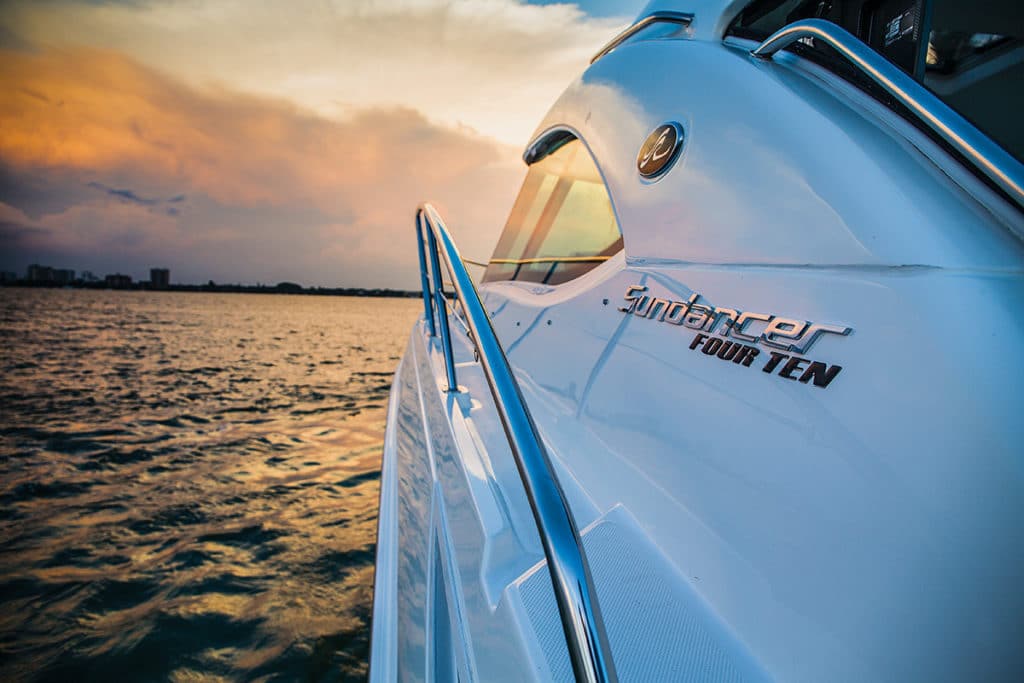
Rules for the fishing tournament at Catalina Island off the coast of Southern California allowed us to fish all night, so our team decided to anchor in a potentially productive, albeit lumpy, cove on the breezy, wave-swept backside of the island.
We weren’t alone. Several other boats anchored close by, two within 50 feet of us. So we decided that each member of our four-man crew would take turns standing watch and checking fishing lines while others snoozed.
I rolled out for my rotation at 4 a.m., and about a half-hour later I noticed that the boat anchored to port was sliding into our port quarter. Its anchor was dragging and the crew had failed to post a watch. I fired up the mains and nudged us out of harm’s way. That woke up everyone, including the crew on the “slider,” who hustled out to get underway and reset the anchor.
Standing watch might sound easy, but try staying awake and alert to potential dangers all night on the hook. Unless there are fish biting, you’ll eventually fall asleep, at least momentarily. I know. I’ve been there.
There is a solution, but first let’s talk about the importance of a lookout if you plan on anchoring for the evening. Posting an anchor watch is not only prudent; it’s required by law.
The International Regulations for Preventing Collisions at Sea (Colregs) Rule 5 (known as the Lookout Rule) states: “Every vessel shall at all times maintain a proper lookout by sight and hearing as well by all available means appropriate in the prevailing circumstances and conditions so as to make a full appraisal of the situation and of the risk of collision.”
Also, given that the person who stands watch will be alone on deck, he should be wearing a Coast Guard-approved life jacket as well as a personal locator beacon (PLB).
I’ll admit to having left the deck unattended in a quiet, secluded anchorage. Yet I make it a practice to get up every hour, scan the surroundings, check our angle on the rode and make sure the anchor isn’t dragging.
However, in anchorages subject to boat traffic or where other boats are anchored, it’s a different story. This calls for posting an anchor watch at all times. Other boats are not the only threats. Your own anchor might drag or the rode could break. A sudden storm might threaten the crew’s safety.
The Coast Guard recognizes that not every vessel maintains a lookout while at anchor, but also admonishes skippers and crews who sleep through the night.
“This practice is dangerous, as well as being a violation of basic seamanship law,” the Coast Guard states in a news release directed at Alaskan commercial fishermen. Citations for violations of Rule 5 range upward to $6,500.
Relying solely on radar guard-zone alarms or GPS anchor-watch alarms is not sufficient, says the Coast Guard, though this equipment should still be used to augment your lookout measures.
While it’s the captain’s ultimate responsibility to maintain an anchor watch, the best procedure is to rotate lookout responsibilities. It helps to have a four-man crew, but it can also work with as few as two aboard. In any case, two-hour shifts keep each man alert throughout his watch. To stay awake, set your mobile phone or digital wristwatch to sound an alarm at 15-minute increments.
Crew members also need to respond ably in an emergency, so make sure everyone knows how to start the engine(s), maneuver the boat and retrieve the anchor line. The lookout should call all hands on deck as soon as he senses impending danger.
No one likes to get rousted out of a warm bunk to stand lookout, but rotating the anchor watch shares the burden and helps ensure the safety of the crew, while also allowing everyone to rest knowing that there’s someone awake on deck. Besides, it’s the law.
Quick Tip: Suggested overnighting scope on the anchor is 7:1, but less can work depending upon room to swing.









